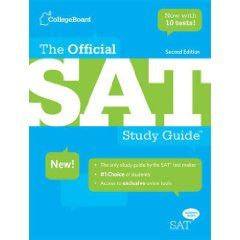The ACT exam is undergoing its most significant transformation in decades. Starting in April 2025, students will have the option to choose between the traditional ACT format and the new Enhanced ACT (EMR – English, Math, Reading). For students planning to take the ACT in July 2025, understanding these differences is crucial for making an informed decision that aligns with your college goals and testing strengths.
Timeline for ACT Changes in 2025
The transition to the Enhanced ACT follows a specific timeline that affects July 2025 test-takers:
- April 2025: First administration of the Enhanced ACT (online only)
- July 2025: Both Traditional and Enhanced ACT options available
- September 2025: Enhanced ACT becomes the standard for all paper and online tests
- Spring 2026: Complete transition for state and district testing
July 2025 represents a unique opportunity for students to choose their preferred format before the Enhanced ACT becomes the universal standard.
Enhanced ACT vs Traditional ACT: Core Differences
Question Numbers and Testing Time Comparison
| Format | Total Questions | Total Testing Time | Questions Reduced | Time Saved |
| Traditional ACT | 215 questions | ~3 hours | – | – |
| Enhanced ACT (EMR) | 131 questions | 125 minutes (2 hours 5 minutes) | 84 fewer questions | ~55 minutes shorter |
Section-by-Section Question Distribution
| Section | Traditional ACT Questions | Traditional Time | Enhanced ACT Questions | Enhanced Time | Time per Question |
| English | 75 questions | 45 minutes | 50 questions | 35 minutes | ~42 seconds |
| Math | 60 questions | 60 minutes | 45 questions | 50 minutes | ~1 minute 7 seconds |
| Reading | 40 questions | 35 minutes | 36 questions | 40 minutes | ~1 minute 7 seconds |
| Science | 40 questions | 35 minutes | 40 questions (Optional) | 40 minutes | ~1 minute |
| Writing | 1 prompt | 30 minutes | 1 prompt (Optional) | 40 minutes | N/A |
Enhanced ACT Format Options for July 2025
The Enhanced ACT introduces unprecedented flexibility with four different testing configurations:
Available Test Combinations
| Test Option | Sections Included | Total Time | Scores Received |
| Standard ACT (EMR) | English, Math, Reading | 125 minutes | Composite Score only |
| ACT + Science | EMR + Science | 165 minutes | Composite + STEM Score |
| ACT + Writing | EMR + Writing | 165 minutes | Composite + ELA Score |
| ACT + Science & Writing | EMR + Science + Writing | 205 minutes | Composite + STEM + ELA Scores |
Section-by-Section Changes in Enhanced ACT
Comprehensive Section Changes Table
| Aspect | Traditional ACT | Enhanced ACT | Key Changes |
| ENGLISH SECTION | |||
| Questions | 75 questions | 50 questions | 25 fewer questions (-33%) |
| Time | 45 minutes | 35 minutes | 10 minutes less (-22%) |
| Time per Question | 36 seconds | 42 seconds | 6 seconds more per question |
| Answer Choices | 5 options (A-E) | 4 options (A-D) | Reduced by 1 option |
| Content Focus | Grammar & Rhetorical Skills | More Rhetorical Skills emphasis | Shift from grammar mechanics |
| Passage Length | Standard length | Shorter passages | Reduced reading time |
| New Features | Traditional format | Argumentative essays with questions | Added essay analysis |
| MATH SECTION | |||
| Questions | 60 questions | 45 questions | 15 fewer questions (-25%) |
| Time | 60 minutes | 50 minutes | 10 minutes less (-17%) |
| Time per Question | 60 seconds | 67 seconds | 7 seconds more per question |
| Answer Choices | 5 options (A-E) | 4 options (A-D) | Reduced by 1 option |
| Essential Skills | ~24 questions (40%) | Reduced emphasis | Fewer basic math questions |
| Advanced Topics | ~18 questions (30%) | Reduced count | Fewer higher-level items |
| Context Questions | Standard amount | Fewer context-heavy questions | Less reading required |
| READING SECTION | |||
| Questions | 40 questions | 36 questions | 4 fewer questions (-10%) |
| Time | 35 minutes | 40 minutes | 5 minutes more (+14%) |
| Time per Question | 52.5 seconds | 67 seconds | 14.5 seconds more per question |
| Answer Choices | 5 options (A-E) | 4 options (A-D) | Reduced by 1 option |
| Passage Length | Standard length | Shorter passages | Reduced reading load |
| IKI Questions | ~12 questions (30%) | Increased to ~14 questions (39%) | More integration questions |
| SCIENCE SECTION | |||
| Questions | 40 questions | 40 questions | No change in count |
| Time | 35 minutes | 40 minutes | 5 minutes more (+14%) |
| Time per Question | 52.5 seconds | 60 seconds | 7.5 seconds more per question |
| Answer Choices | 5 options (A-E) | 4 options (A-D) | Reduced by 1 option |
| Section Status | Mandatory | OPTIONAL | Major structural change |
| Engineering Topics | Variable | Guaranteed 1 passage | Consistent coverage |
| Scientific Knowledge | Limited | More DCI questions | Increased background knowledge |
| WRITING SECTION | |||
| Format | 1 essay prompt | 1 essay prompt | No changes |
| Time | 30 minutes | 40 minutes | 10 minutes more (+33%) |
| Section Status | Optional | Optional | Remains optional |
Content Distribution Changes by Section
| Section | Traditional Categories | Enhanced Categories | Major Shifts |
| English | Usage/Mechanics: 53% | Usage/Mechanics: 40% | -13% shift to rhetorical |
| Rhetorical Skills: 47% | Rhetorical Skills: 60% | +13% emphasis increase | |
| Math | Essential Skills: 40% | Essential Skills: 33% | -7% reduction |
| Integrating Skills: 30% | Integrating Skills: 33% | +3% slight increase | |
| Advanced Skills: 30% | Advanced Skills: 33% | Maintained but fewer total | |
| Reading | Key Ideas: 38% | Key Ideas: 33% | -5% reduction |
| Craft & Structure: 32% | Craft & Structure: 28% | -4% reduction | |
| Integration (IKI): 30% | Integration (IKI): 39% | +9% major increase | |
| Science | Data Representation: 40% | Data Representation: 40% | No change in proportion |
| Research Summaries: 45% | Research Summaries: 45% | No change in proportion | |
| Conflicting Viewpoints: 15% | Conflicting Viewpoints: 15% | No change in proportion |
Answer Choice Reduction Impact
| Section | Traditional Options | Enhanced Options | Strategic Impact |
| English | A, B, C, D, E | A, B, C, D | 20% reduction in guessing odds |
| Math | A, B, C, D, E | A, B, C, D | 20% reduction in guessing odds |
| Reading | A, B, C, D, E | A, B, C, D | 20% reduction in guessing odds |
| Science | A, B, C, D, E | A, B, C, D | 20% reduction in guessing odds |
| Writing | N/A | N/A | No change (essay format) |
Scoring System Comparison
Traditional ACT Scoring
| Score Type | Calculation | Scale | Sections Included |
| Composite | (E + M + R + S) ÷ 4 | 1-36 | English, Math, Reading, Science |
| STEM | (M + S) ÷ 2 | 1-36 | Math, Science |
| ELA | (E + R + W) ÷ 3 | 1-36 | English, Reading, Writing |
Enhanced ACT Scoring
| Score Type | Calculation | Scale | Sections Included |
| Composite | (E + M + R) ÷ 3 | 1-36 | English, Math, Reading only |
| STEM | (M + S) ÷ 2 | 1-36 | Math, Science (if taken) |
| ELA | (E + R + W) ÷ 3 | 1-36 | English, Reading, Writing (if taken) |
Scoring Example Comparison
Consider a student with the following section scores:
- English: 30
- Math: 28
- Reading: 32
- Science: 26
- Writing: 8
Traditional ACT Scores:
- Composite: (30 + 28 + 32 + 26) ÷ 4 = 29.0
- STEM: (28 + 26) ÷ 2 = 27.0
- ELA: (30 + 32 + 8) ÷ 3 = 23.3
Enhanced ACT Scores (if taking Science & Writing):
- Composite: (30 + 28 + 32) ÷ 3 = 30.0
- STEM: (28 + 26) ÷ 2 = 27.0
- ELA: (30 + 32 + 8) ÷ 3 = 23.3
Notice how the Enhanced ACT composite score is higher because it excludes the lower Science score from the calculation.
Category Distribution Analysis
English Section Content Distribution
| Category | Traditional ACT | Enhanced ACT | Change |
| Usage/Mechanics | ~40 questions (53%) | ~20 questions (40%) | Reduced emphasis |
| – Punctuation | ~14 questions | ~8 questions | Fewer questions |
| – Grammar & Usage | ~16 questions | ~8 questions | Fewer questions |
| – Sentence Structure | ~10 questions | ~4 questions | Fewer questions |
| Rhetorical Skills | ~35 questions (47%) | ~30 questions (60%) | Increased emphasis |
| – Strategy | ~12 questions | ~12 questions | Maintained |
| – Organization | ~11 questions | ~9 questions | Slight reduction |
| – Style | ~12 questions | ~9 questions | Slight reduction |
Math Section Content Distribution
| Category | Traditional ACT | Enhanced ACT | Change |
| Essential Skills | ~24 questions (40%) | ~15 questions (33%) | Reduced emphasis |
| Integrating Essential Skills | ~18 questions (30%) | ~15 questions (33%) | Slight increase |
| Advanced Skills | ~18 questions (30%) | ~15 questions (33%) | Reduced emphasis |
Reading Section Content Distribution
| Category | Traditional ACT | Enhanced ACT | Change |
| Key Ideas and Details | ~15 questions (38%) | ~12 questions (33%) | Reduced |
| Craft and Structure | ~13 questions (32%) | ~10 questions (28%) | Reduced |
| Integration of Knowledge and Ideas | ~12 questions (30%) | ~14 questions (39%) | Increased emphasis |
Strategic Advantages of Each Format
Choose Traditional ACT if:
- You excel in Science and want it to contribute to your composite score
- You prefer the established format with extensive prep materials available
- Your target colleges specifically request traditional four-section scores
- You have already invested significant time in traditional ACT preparation
- You perform well under longer testing conditions
Choose Enhanced ACT if:
- Science is your weakest subject and you want to exclude it from composite scoring
- You struggle with testing endurance and prefer shorter exams
- You want more time per question in Math and Reading sections
- You’re comfortable with modern, streamlined testing formats
- Cost is a factor (Enhanced ACT has lower base cost)
Preparation Strategy Differences
Traditional ACT Preparation Focus
Time Allocation for Study:
- English: 25% of prep time (focus on grammar rules)
- Math: 30% of prep time (comprehensive coverage)
- Reading: 20% of prep time (speed and comprehension)
- Science: 25% of prep time (data interpretation)
Enhanced ACT Preparation Focus
Time Allocation for Study:
- English: 30% of prep time (emphasis on rhetorical skills)
- Math: 35% of prep time (focused on essential and integrating skills)
- Reading: 35% of prep time (Integration of Knowledge and Ideas)
- Science: Variable (only if choosing to take it)
College Admissions Considerations
Score Acceptance and Recognition
Both Traditional and Enhanced ACT scores will be equally accepted by colleges and universities. The Enhanced ACT is designed to maintain statistical validity and comparability with traditional scores through rigorous psychometric analysis.
Strategic Considerations for Different Student Profiles
STEM-Focused Students:
- May benefit from Traditional ACT to showcase Science skills
- Enhanced ACT + Science option provides both composite and STEM scores
- Consider target schools’ preferences for Science section performance
Liberal Arts Students:
- Enhanced ACT may provide score advantages if Science is weak
- Focus on optimizing English and Reading performance
- Consider Enhanced ACT + Writing for ELA score
Test-Anxious Students:
- Enhanced ACT’s shorter format may reduce fatigue-related errors
- More time per question can improve accuracy
- Less overwhelming overall testing experience
What Remains Unchanged
Despite significant modifications, several key aspects remain consistent:
- Score Scale: 1-36 scale maintained for all sections and composite
- Test Structure: Fixed, linear test (not computer-adaptive)
- Question Types: Multiple-choice format preserved
- Writing Section: Prompt-based essay format unchanged
- Delivery Options: Both paper and online formats available
Making Your July 2025 Decision
Assessment Questions to Consider:
- Science Performance: How do you typically perform on ACT Science sections?
- Testing Endurance: Do you experience fatigue during long exams?
- College Requirements: Do your target schools have specific section requirements?
- Preparation Time: How much time do you have to prepare for each format?
- Retesting Plans: Are you planning multiple test attempts?
Recommended Decision Framework:
Step 1: Take diagnostic tests in both formats
Step 2: Analyze your performance patterns and strengths
Step 3: Research your target colleges’ preferences and requirements
Step 4: Consider your timeline and preparation resources
Step 5: Make an informed decision based on data, not assumptions
Future-Proofing Your Test Strategy
Since the Enhanced ACT becomes the universal standard in September 2025, taking it in July 2025 offers several advantages:
- Early Experience: Familiarity with the format before it becomes mandatory
- Score Comparison: Ability to compare performance across formats
- Retesting Options: Flexibility for future test dates
- Preparation Efficiency: Alignment with future testing requirements
Conclusion
The choice between Enhanced ACT and Traditional ACT for July 2025 represents a pivotal decision in your college preparation journey. The Enhanced ACT offers a more streamlined, flexible approach with potentially strategic scoring advantages, while the Traditional ACT provides the established, comprehensive assessment that has served students for decades.
Consider your individual strengths, college goals, and testing preferences when making this decision. Remember that both formats are designed to accurately measure college readiness and will be equally valued by admissions committees. The key is choosing the format that best showcases your abilities and aligns with your academic objectives.
Whether you choose the comprehensive Traditional ACT or the innovative Enhanced ACT, success depends on thorough preparation, strategic test-taking approaches, and a clear understanding of how each format serves your college admissions goals. ACT also released the Enhanced ACT practice Test which can be a good resource to practice the new format.
Socrato also provides the Diagnostic Reports for EMR and EMRS. Also, try Socrato’s new Digital ACT test, take it for free and get an idea and experience of the new Digital ACT.










